Love, Pride and Passion: A visit to the August Förster Factory
Written by Andrew Greenwood - Administrator.

Our Visit. Early on a cold Autumn morning, before the real cold weather arrived in Central Europe, we embarked on our trip to Löbau to see the August Förster piano factory. Our party of six included Peregrine’s Pianos staff, one of our tuners and and a technician, and a guest dealer. Having worked at Peregrine’s Pianos and heard so much about the unique history of these instruments I was very excited at this prospect. Our journey allowed a short stop-over in Dresden, which illustrated the significance of the August Förster lineage.
A Look at Dresden. Dresden is a remarkable city and the epitome of fine music traditions in Germany. Although much was destroyed in the Twentieth Century, the Baroque style of the city built by Augustus the Strong – the Elector of Saxony - is still evident. We visited most of the old part of Dresden, seeing the Semperoper, the Zwinger, the Hofkirche (Dresden Cathedral) and the Frauenkirche; it was an extraordinary and enlightening experience for me. Augustus’ life spanned across much the same time as J.S. Bach and it is interesting to see the correlations between Baroque music and the architecture of the city.
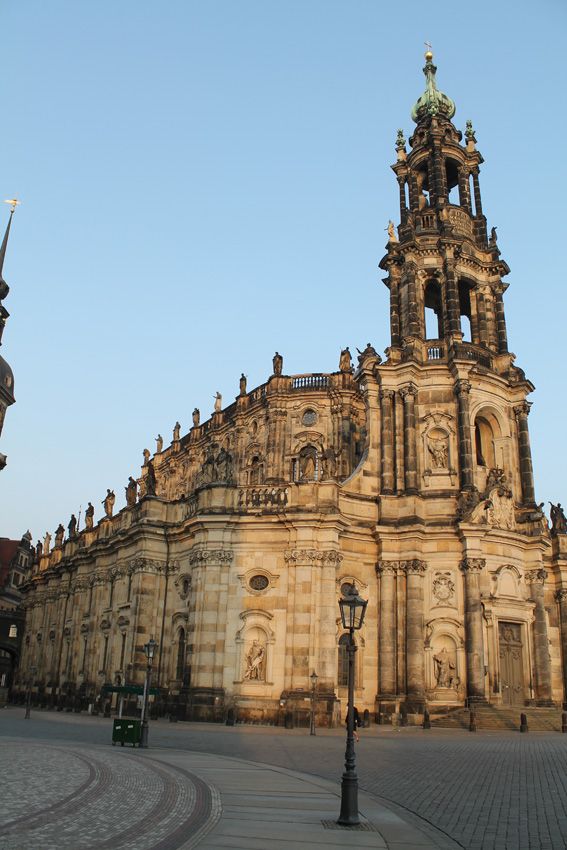
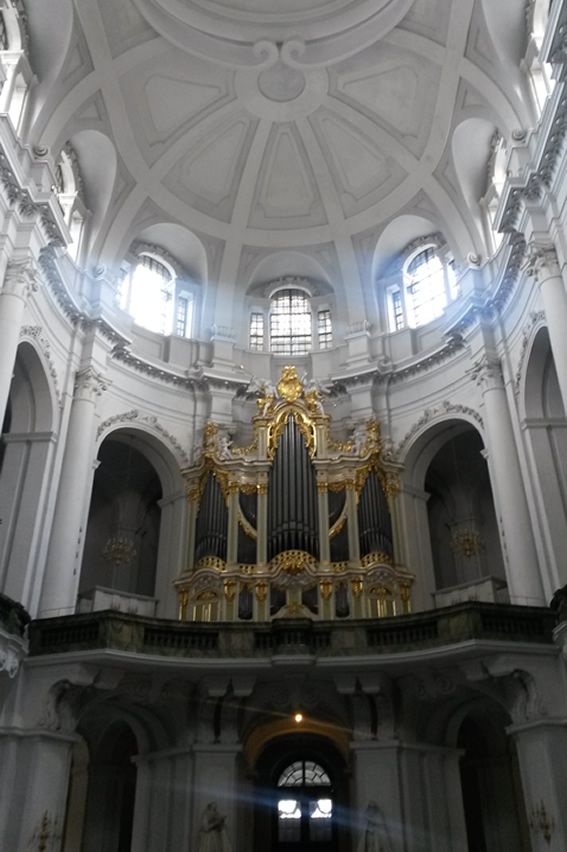
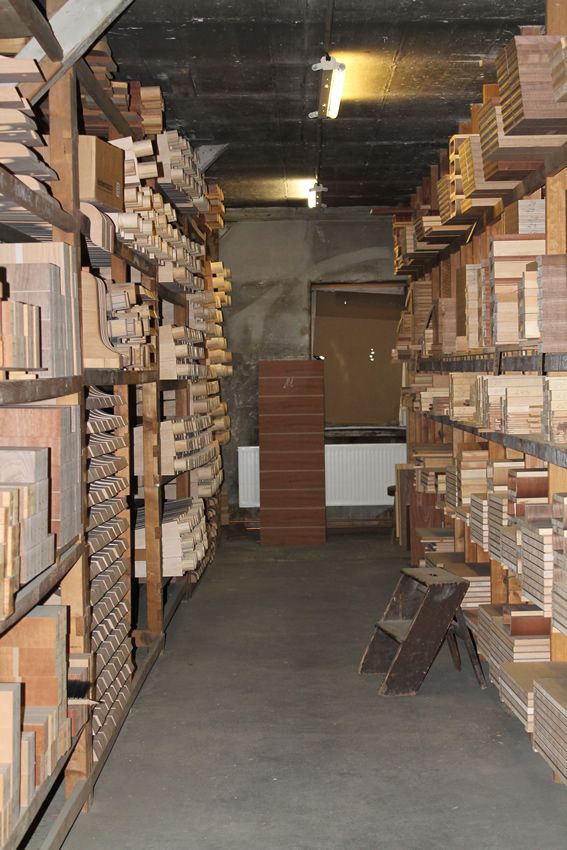
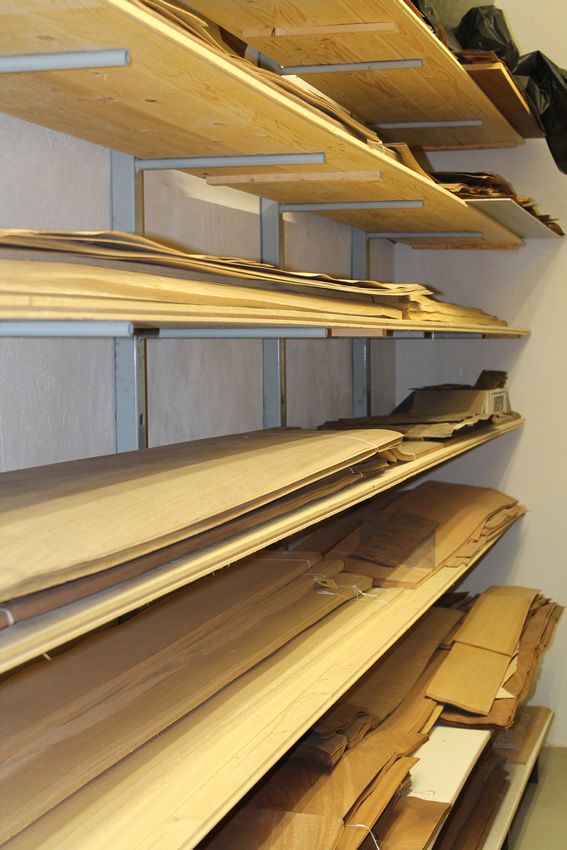
Gottfried Silbermann (1683-1753) was one of the skilled craftsman employed by the Elector and we admired his remarkable organ in the Cathedral. Silbermann, however, was also a noted builder of pianos and trained large numbers of apprentices in piano building. After his death the Seven Years war (1756-1763) sent ‘twelve apostles’ – all apprentices of Silbermann - to the corners of Europe. It is fascinating to reflect one hundred years later, when factories are being built in order to manufacture pianos, that so many of the foundations were laid in and around Dresden.
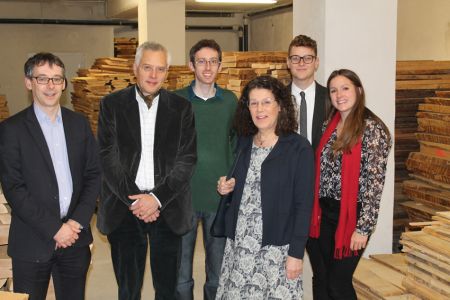
The Piano Factory. Friedrick August Förster built his factory in 1859 in Löbau (an hour’s train journey out of Dresden) and it is perhaps because he did not choose to build it in the city centre that it still survives today. The Saxony countryside is beautiful and free of chaos, and our hotel sat high on a mountain with a picturesque view over Löbau. We were accompanied for our evening meal by Annekatrin Förster, the Director of the company, and Frank Israel who was to be our guide the following day.
The factory hours begin at 6.45am (they work until 3.30pm) and we were warmly welcomed soon after 8am. The large factory buildings seemed to be an integral part of the town centre and exude a timeless quality, even the later additions do not look out of place. The understated main entrance sets the tone of what lies behind it; there are no glass panels, revolving doors and spacious reception areas here. The wood panelling harks back through many generations; the sombre panels on the wall remind us of the workers who lost their lives in the First World War, and another that these pianos were made by Royal Appointment. Everything around us illustrates the strong ties to the heritage and tradition of the August Förster family.
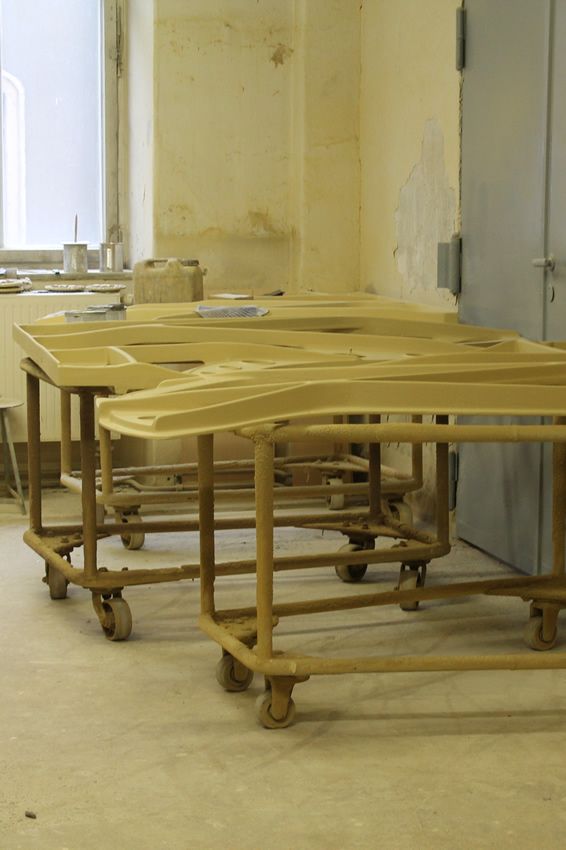
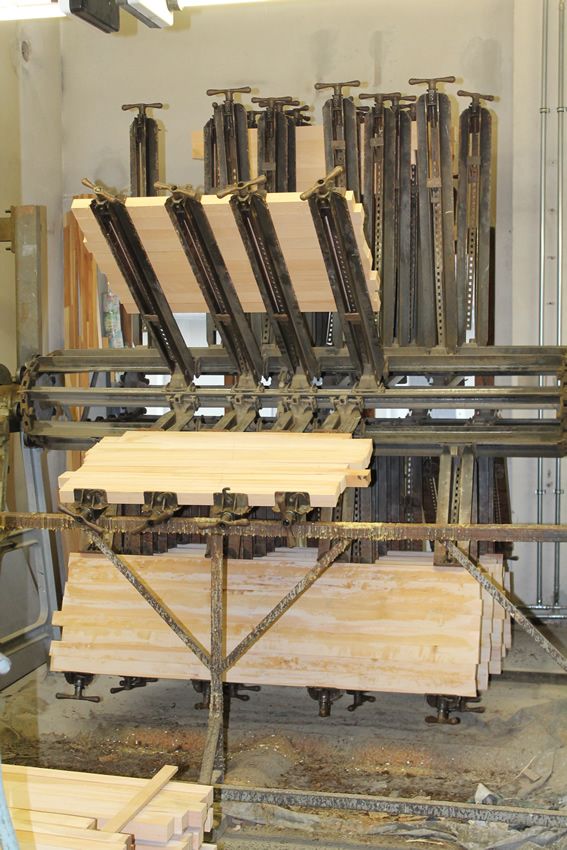
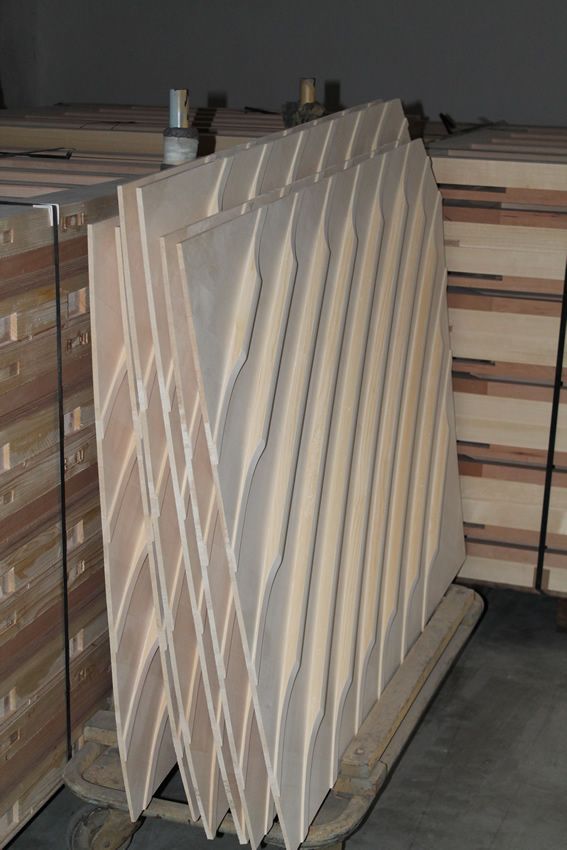
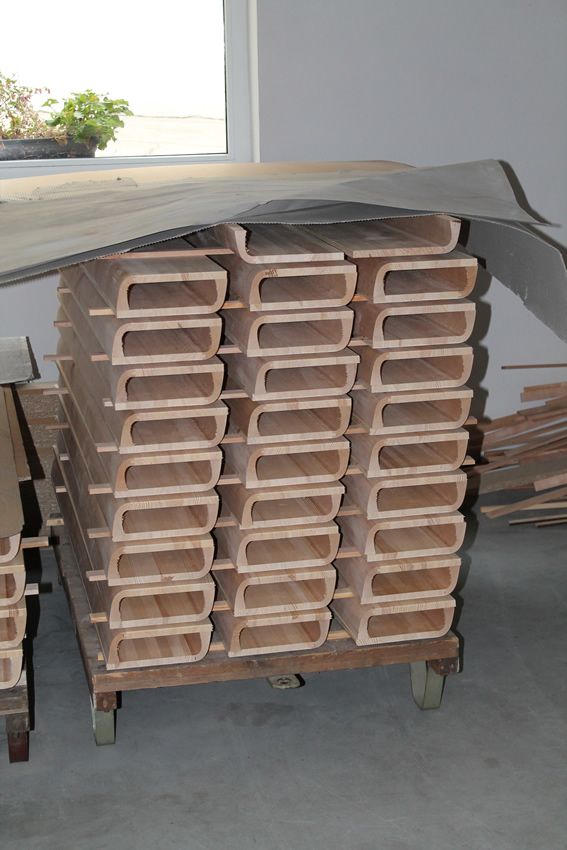
A Profusion of Workshops.
Wood Preparation. Our tour started in the drying room where stacks of timber are left to settle in a controlled environment for between two and five years. This process slowly removes the moisture from the timber to ensure that it does not subsequently warp or crack.
Carpentry. A large part of the piano is timber and we saw all the sawing, planing, sanding and joinery involved. The oldest machine, and it has been used in the factory for one hundred and thirty years, is the 'glue star'. This holds wood planks in place while the glue is drying. The manufacture of the grand piano frames is critical because of the enormous amount of pressure they are to be subjected to. Looking at the large clamps used to form the elegant sides of the grand pianos was a real insight for me. We saw in detail how the veneers are used; three veneers used when other manufacturers might use just one is an example of the high quality of these pianos.
Soundboard Manufacture. We were shown a room where the ribs on the soundboards were being shaped by hand. The ribs are important for ensuring the correct amount of support and flexibility on the soundboard and is a very precise task which takes years of experience to perfect.
Cast Iron Frames. We admired a wooden jig used at the foundry when producing the cast iron frames. There is a long and rather unrewarding process of sanding and finishing the casting, which is all part of the company’s attention to detail. The finished frame is completely smooth and pleasing both to the eye and to the touch.
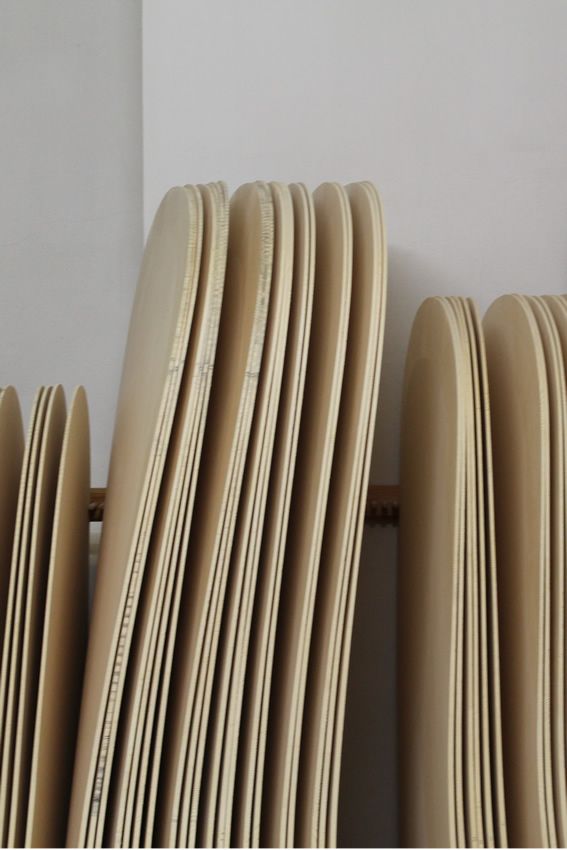
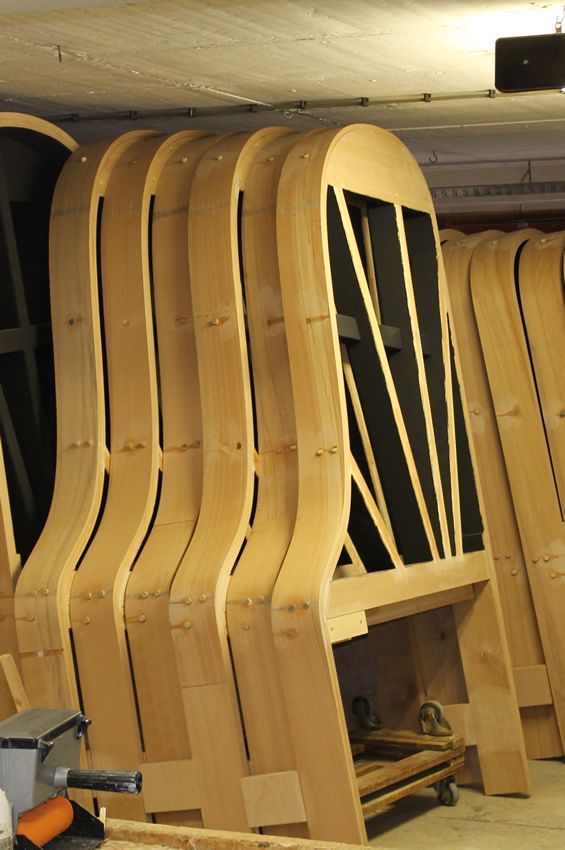
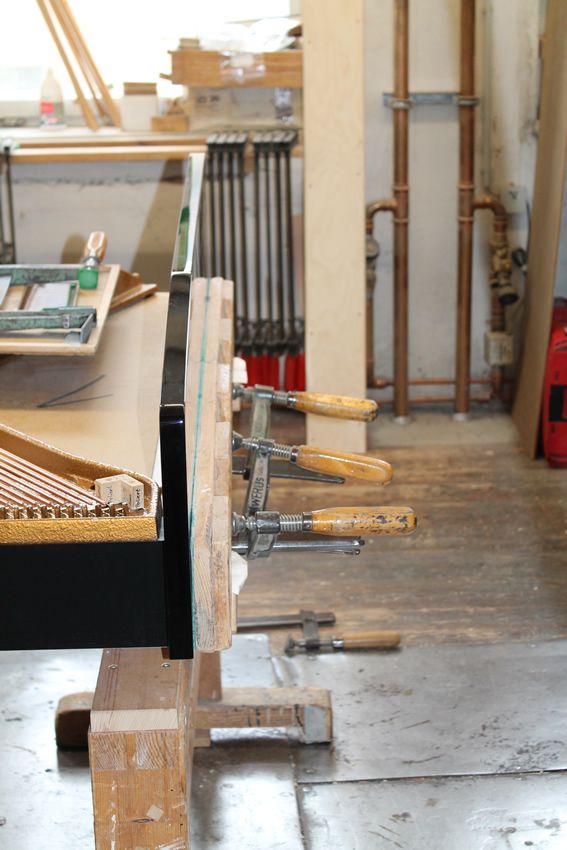
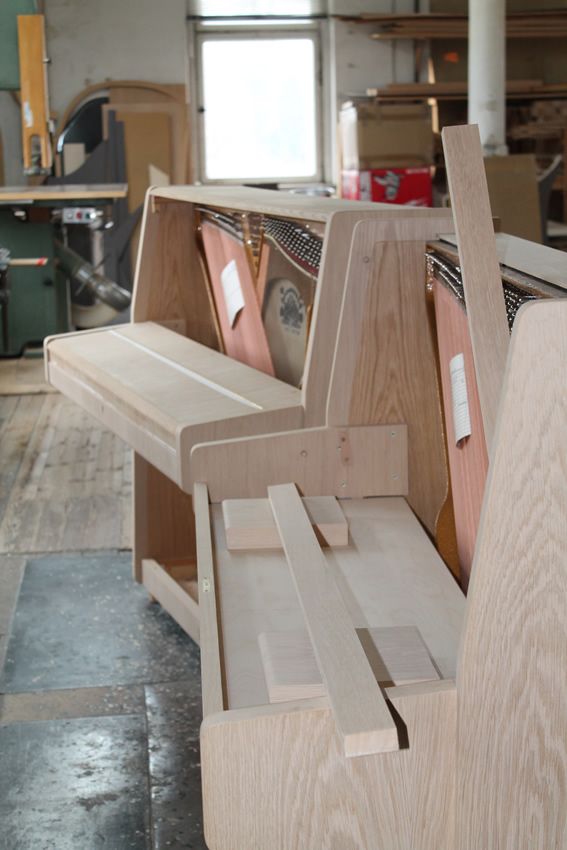
Piano Stringing. We were taken to another workshop where the strings were made and fitted. Here the craftsman expertly wound the bass strings by hand before installing them into the piano himself. The tuning pins were then bumped in with a mallet before being loosely brought up to pitch.
Polyester Application. The polyester room is normally not for general viewing. This is a lengthy and messy process with some panels requiring up to eight layers of polyester; each layer takes two or three hours to dry. After application the surface must be rubbed down, polished and buffed many times to achieve the smooth, shiny finish required. Three people work solely in the polishing room as it requires a unique set of skills. Most of the workers will do several different jobs within the factory that require different skills, making the polishers even more unusual.
Fitting the Action. The action and hammers are made by Renner to meet August Förster's specifications. Assembly into the completed shell is a skilled business and we watched as the parts were lined up and the hammers glued on by hand. The fitter barely broke concentration to acknowledge our arrival.
Chipping Room. There is a large section on the top floor called the chipping room; dozens of pianos stand in rows and are regularly tuned over a three or four-month period. This allows the tuning to properly settle and August Förster pianos are stable from the moment they leave the factory.
Finishing Room. The pianos finally arrive in the finishing room where they are checked by Frank and his team to ensure they have the sound quality they need. It was a wonderful sight and I enjoyed the opportunity to play the whole range of instruments and see them together in one room!
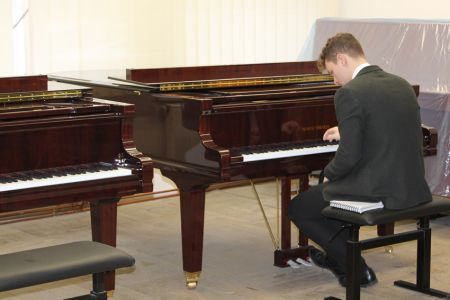
My Reflections. It was a privilege to take in the history of this long established company and the visit, with its insights, inspired even greater respect and understanding for these pianos. The skilled craftsmen have years of experience and I was really impressed at the care and attention that went in to every aspect of the production process. As we made the return journey, I have a new respect for the traditions, heritage and quality surrounding August Förster pianos.
Like our customers, I could appreciate the excellent quality when playing. Now I can also vouch for the unique legacy of August Förster; it is a loyalty and pride for the pianos they build that sets this company apart. The company’s maxim of Love, Pride and Passion was plain to see throughout the factory and its workforce.